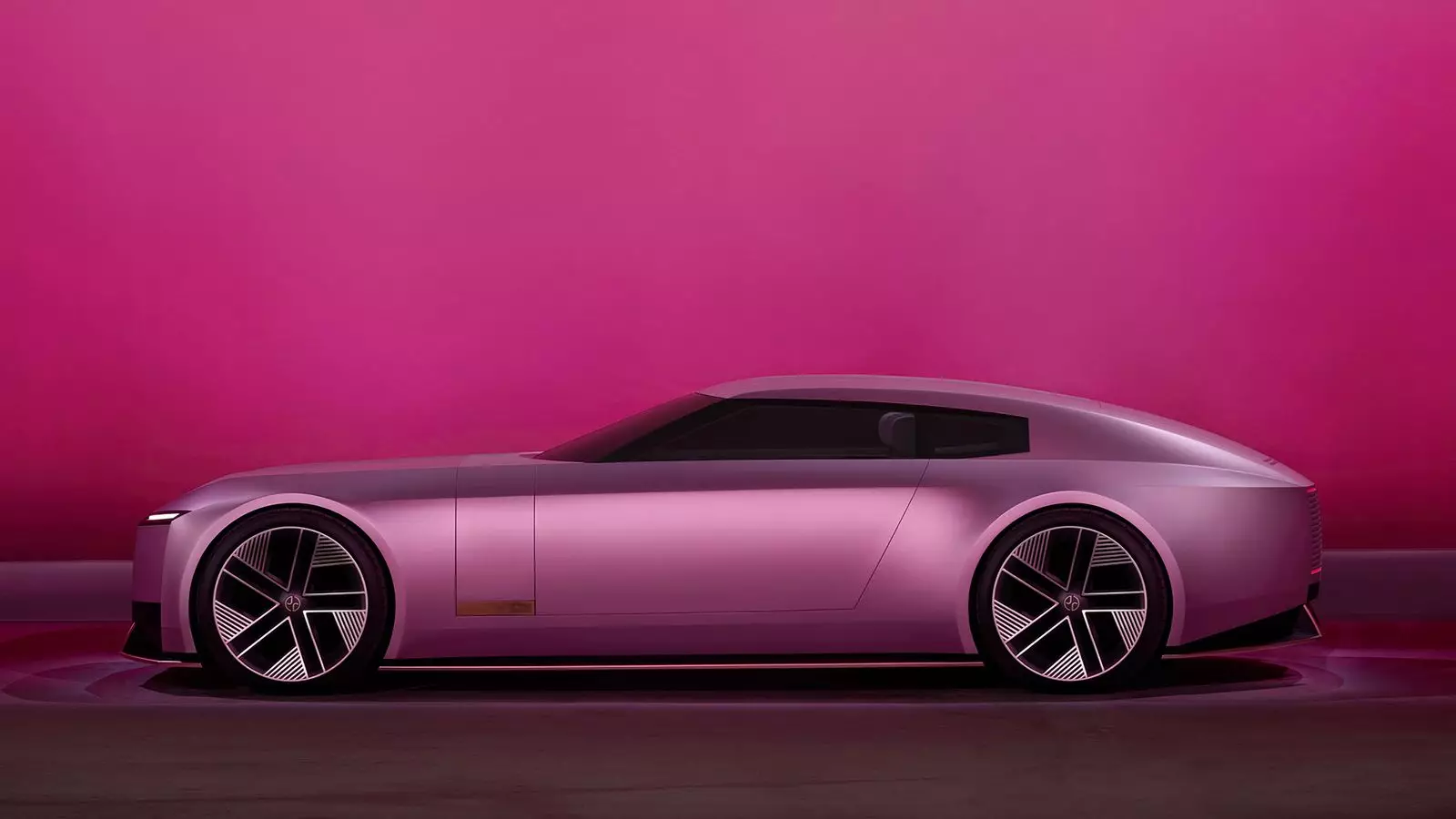Jaguar, a name synonymous with luxury and performance, is embarking on a journey that seeks to redefine its identity as it transitions into a fully electric brand. Managing Director Rawdon Glover recently elaborated on this transformative phase during an interview with Sky News. Jaguar’s recent rebranding efforts have stirred significant debate within the industry and among the general public, highlighting the fine line the manufacturer must tread between maintaining its prestigious heritage and adapting to modern expectations for sustainability and innovation.
At the forefront of Jaguar’s new strategy is the unveiling of the Type 00 in Miami, which Glover describes as a “concept with bold forms and exuberant proportions.” This new model is presented in vibrant colors—Miami Pink and London Blue—further emphasizing the car brand’s intention to shake up the market. The Type 00 is built on a dedicated platform promising an impressive range of up to 478 miles, with quick charging capabilities that offer 200 miles of power in just 15 minutes. Such features are crucial in a market increasingly focused on practicality and efficiency, yet they evoke questions about the brand’s luxury positioning amidst this shift.
As Jaguar designs its future, it is clear that performance and range are equally critical determinants of market engagement. Still, one must ponder: will this bold design philosophy resonate with its core customer base, who traditionally value refinement and understated elegance? Glover’s assertion that this upheaval aligns with Jaguar’s ethos is a risky proposition, potentially alienating loyal customers while attempting to attract new ones.
The launch of Jaguar’s new brand image included a controversial advertisement that showcased models dressed in bright colors, devoid of any vehicles, set against a stark landscape. This marketing decision has drawn criticism, with public figures like Nigel Farage predicting dire consequences for the brand. The backlash raises critical questions about the effectiveness of such an unconventional approach in connecting with Jaguar’s existing consumer base while reaching out to new demographics.
Glover’s response to the criticism emphasizes a desire for boldness and innovation. He states, “We want to be bold and disruptive,” framing the backlash as part of a broader conversation about the brand’s evolution. However, the challenge remains: can a luxury brand like Jaguar thrive by challenging traditional marketing norms, or will this approach cost them their core identity?
While garnering attention is one aspect of marketing, there lies a fundamental risk in alienating longtime supporters. The electric vehicle (EV) landscape is already riddled with competition from established names like Tesla, which could potentially benefit from any faltering image of Jaguar.
As Jaguar navigates through this transition, Glover’s comments reflect the necessity for the brand to remain relevant not just for today but for the next 90 years. He acknowledges that the automobile industry is in a state of hefty disruption due to technological advancements, emphasizing the importance of adapting to an electrified world. The aim is to maintain brand desirability while simultaneously embracing the future of automotive design and functionality.
However, the question remains: how does Jaguar manage to maintain its identity as a luxury marque while adopting a more disruptive and modern approach? The task ahead involves navigating public perception carefully and ensuring that the conversation evolves past preliminary backlash into a more substantial consideration of Jaguar’s design vision. Glover affirms the brand’s intent to attract existing and new customers alike, signifying a delicate balancing act that could determine Jaguar’s fate in a rapidly changing market.
Jaguar’s endeavor towards revitalization encapsulates the struggles many traditional brands face in the electric age, as they seek not only to innovate but to redefine their connection with consumers. This transition into a bold electric future, spearheaded by the Type 00 and a reimagined brand identity, stands as a testament to Jaguar’s ambition. However, will it ultimately connect with an audience that values the brand’s legacy while welcoming its new direction? The future of Jaguar is uncertain, but one thing is clear: the road ahead is fraught with challenges that will demand strategic foresight, careful communication, and keen understanding of consumer sentiment.


Leave a Reply